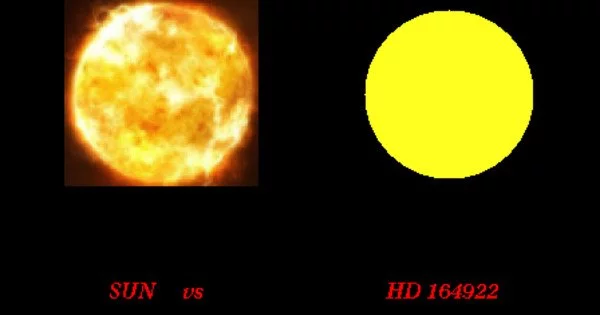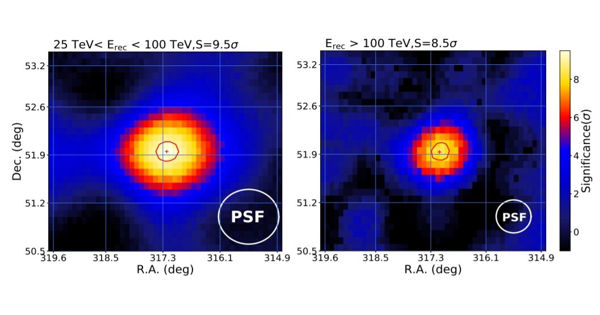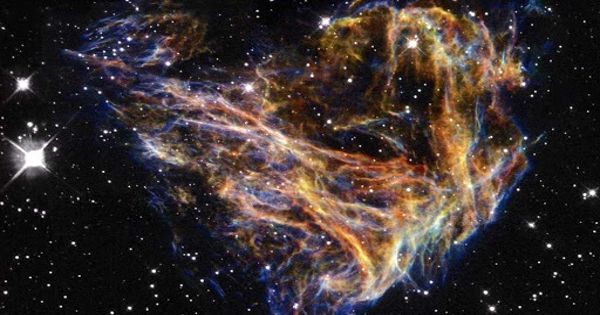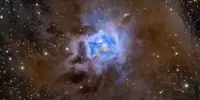HD 164922 is a seven-magnitude G-type main sequence star in the Hercules constellation. Binoculars or a telescope are required to view it because it is too faint to be seen with the naked eye. It is 72 light years away from Earth. It will shortly evolve away from the main sequence and expand to become a red giant at the age of 13.4 billion years. It is one of the oldest known stars in the Universe and one of the Milky Way’s most ancient multi-planetary systems.
HD 164922 is located approximately 72.2 light-years (22.1 pc) from our Solar System. It has a visible magnitude of 7.0 and an absolute magnitude of 5.3. It is 0.9 times more massive and 1.0 times larger than our Sun. The surface temperature is 5293 degrees Fahrenheit, and the spectral type is G9V. This was an on-the-ground discovery. The parameters given here were imported from the NASA Exoplanet Archive into the Open Exoplanet Catalogue.
Nomenclature
HD 164922 is a yellow star located 71.7 light years from the Sun. It is a solitary star of the spectral class G9V C with 87 solar masses. There are several known exoplanets in this system.
The letter b refers to the order of discovery. The letter b is assigned to the initial planet circling a specific star, followed by the other lowercase letters of the alphabet. In the instance of HD 164922, just one planet was identified, which was called b, followed by a more inner planet, which was designated c. The star’s name, HD 164922, is derived directly from the fact that it is the 164,922nd star discovered in the Henry Draper catalog.
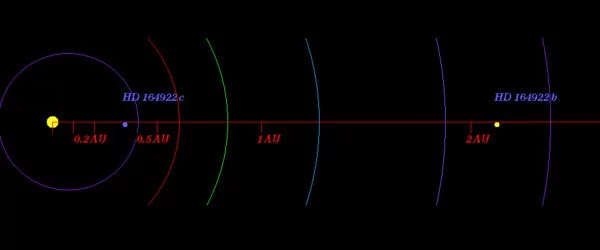
Stellar characteristics
HD 164922 is a G-type main sequence star that is approximately 87% the mass of and 99% the radius of the Sun. It has a temperature of 5293 K and is 13.4 billion years old. In comparison, the Sun is about 4.6 billion years old and has a temperature of 5778 K.
The star is metal-rich, with a metallicity ([Fe/H]) of 0.16, or 144% of the solar amount. This is particularly odd for a star as old as HD 164922. Its luminosity (L☉) is 70% of the solar luminosity.
Planetary system
A long-period Saturn-mass exoplanet orbiting HD 164922 was announced on July 15, 2006. This planet circles the star at a distance of 2.11 AU and has a low eccentricity of 0.05. Almost exactly ten years later, in 2016, another exoplanet, though less massive than the first, was discovered orbiting further in from the star. This planet has a minimum mass of roughly 13 times that of Earth, indicating that it is possibly a Neptune-like planet.
HD 164922 d is a super Earth exoplanet in the habitable zone of a G-type star. It has a mass of four Earths, takes 12.5 days to complete one orbit of its star, and is 0.103 AU away from it. It was discovered in 2020 and was announced. HD 164922 e is an exoplanet that resembles Neptune and orbits a G-type star. It has a mass of 10.52012 Earths, takes 41.8 days to complete one orbit around its star, and is 0.2292 AU away from it. It was discovered in 2021 and announced.
A hot super-Earth-sized exoplanet was discovered in 2020, followed by a Neptune-sized exoplanet in 2021.
